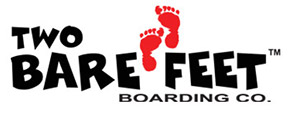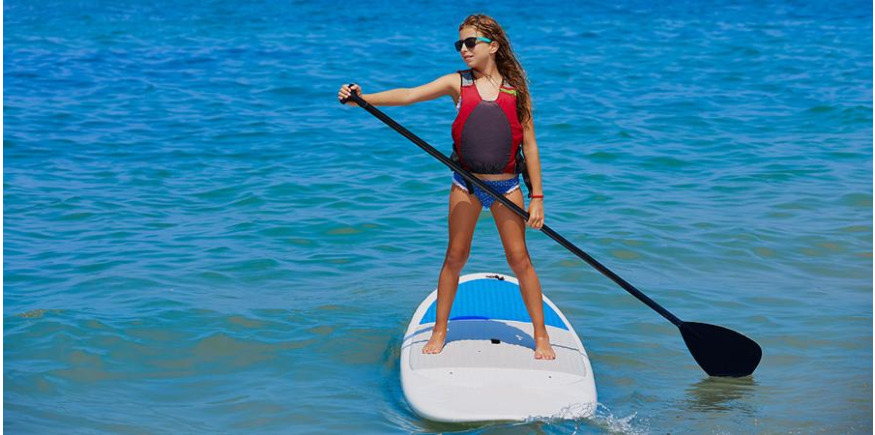Getting kids to enjoy the great outdoors is a universal ambition held by most parents and carers. So what better way to get them on their feet and away from a screen by introducing them to paddleboarding?
Benefits of SUP for children
Paddle boarding can provide a host of physical benefits for a growing child, e.g. development of core strength and stamina.
However, physical activity can also help with mental and social skills. In addition to improving co-ordination and concentration, learning to paddleboard will also challenge the ability to co-operate with others, comprehend instructions, and predict possibilities and outcomes on the fly.
Finally, there are the psychological rewards: achievement will boost self-confidence, and time spent doing something enjoyable with family or friends will strengthen relationship bonds.
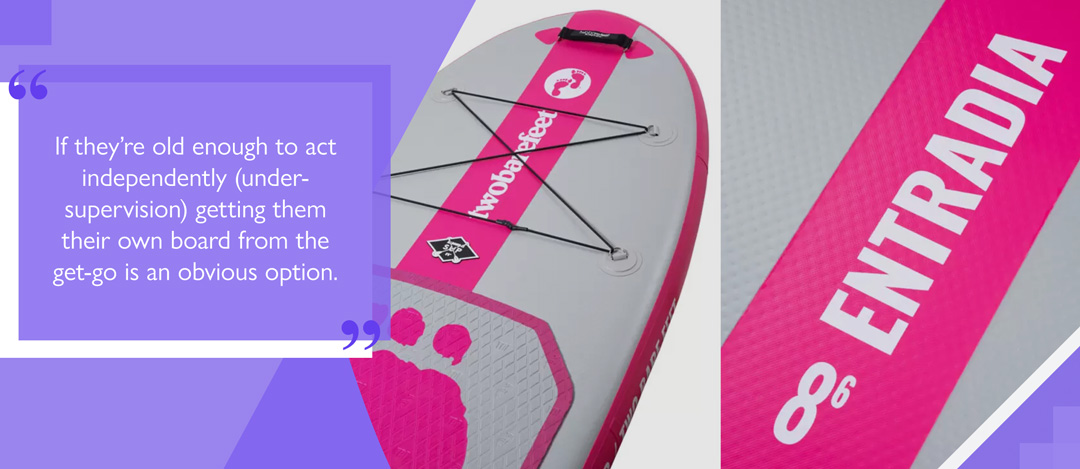
Understanding what your child is ready for
When introducing a child to the water, it’s key that both of you have fun. However, that comes with the responsibility of pitching an experience which accounts for their age, maturity, and level of physical ability.
If they’re old enough to act independently (under supervision) getting them their own board from the get-go is an obvious option.
Bear in mind that, depending on where you go to SUP, there may be an option to hire a board, rather than buy one outright — especially useful if you’re unsure whether your child will like the activity.
If they are very young, or you don’t feel they’re ready to go it alone, look to share a board instead. It’s perfectly possible to paddle with a passenger — just bear in mind the board’s maximum payload before doing so.
Of course, going along for the ride may not always be ‘as fun’ for the passenger, but it will provide the perfect opportunity to teach them how to paddle safely.
SUP safety with children
Safe paddling is always essential, but even more so when a child is involved. They may lack the experience and judgement required for negotiating hazards, or understanding the potential consequences of misadventure.
Water and weather conditions
Stick to flat waters and calm environments. Begin by learning inland, on reservoirs, shallow ponds and lakes, or lagoons. Trying to negotiate waves and currents is hard enough work for an adult, but if a child gets into difficulties, you’ll want to be able to reach them quickly and safely.
Swimming ability
It makes sense that you and your child should both be able to swim. Falling into the water goes with the territory, and although you will be wearing appropriate safety kit (more on that shortly) you’ll want to be assured that your child will not panic if they are submerged, and that you will be able to get to them if required.
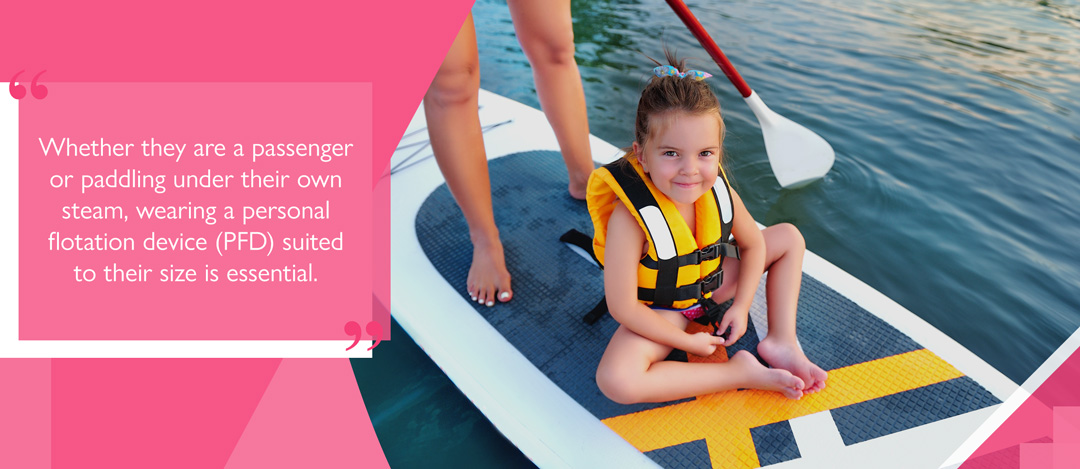
Safety gear
Whether they are a passenger or paddling under their own steam, wearing a personal flotation device (PFD) suited to their size is essential. It helps if you’re wearing one too, to set the example.
You must also ensure you are both wearing a SUP leash, if using individual boards. Given that the SUP functions as a large flotation device, it makes sense to stay attached — you’ll also reduce the risk of your child losing their board. If you opt to share a board, make sure you are the one wearing the leash.
Wearing appropriate clothing
Make sure you and your child wear appropriate clothing for the conditions. We’d recommend starting off in fine weather, but remember that water temperature and wind speeds can be deceptive. Consider a junior-sized wetsuit for sessions outside of summertime, a rash vest, and a hat to protect the head from overexposure to the sun.
Items and accessories
Speaking of the sun, make sure you pack sunblock rated at a suitable SPF level. As with any adult excursion, be prepared with all of the other key items you’ll want for comfort and safety, including enough water to stay hydrated, a mobile phone, and snacks to keep both of you going.
SUP teaching and expectations
Before heading out, consider some pre-launch preparation to make the day unfold smoothly. Part of this can be managed by guiding both your child’s expectations and your own.
It’s fun to learn new things, but it can take time and work before it feels rewarding; something your child may have a lesser sense for. It’s important they understand that they won’t necessarily be zipping around the water straight away — a realisation that could lead to frustration, an unwillingness to try and the end of any future SUP sessions.
Start small, and progress steadily; encouraging and congratulating successes and effort.
Remember: a child is a child — they’ll tire quicker, get bored more easily, be less well equipped to process failure and setbacks, get hungry suddenly and be likely to want the toilet at the most inopportune times!
Modify your own expectations too
Paddling with a child will probably mean short bursts of activity or even just paddling for a few minutes before doing something else, like swimming instead. Take it at a pace that’s appropriate to them, and don’t openly express negativity if the trip doesn’t turn out the way you expected. You can always go paddling by yourself another time!
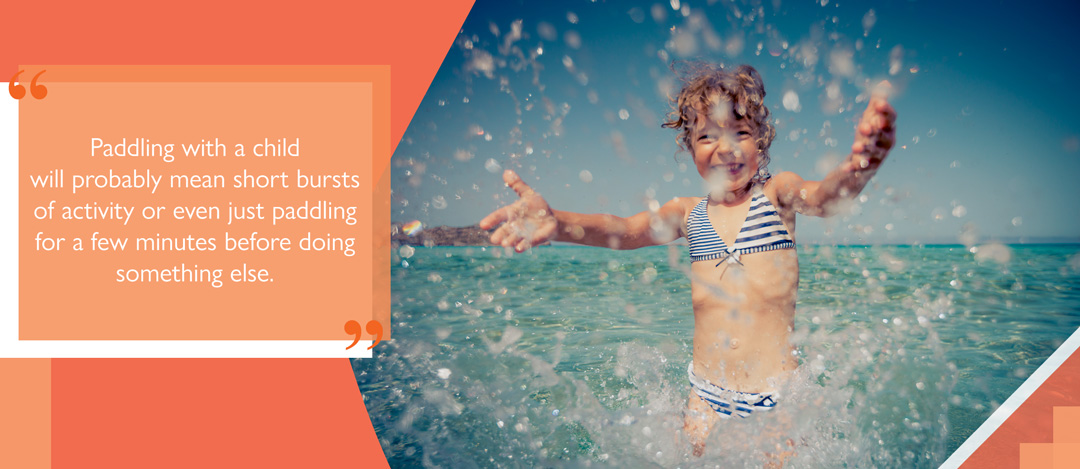
Getting the right kit
Choosing a board
Whether you choose to share a board or not, SUP size and weight will play a factor in any decisions. If you share a board, you’ll need to make sure the board will support the total weight of two riders and any cargo. If not, it may be a case of upgrading to a larger touring SUP with enough volume to remain stable in the water.
If you choose to get your child their own board, we’d recommend getting them an inflatable SUP. Not only will it be easy to transport and maintain, the softer build is likely to hurt less if they bump into it when falling.
If you choose to purchase an iSUP, there are two approaches: either get a junior-sized inflatable from a reputable manufacturer / retailer, or buy a small paddle board. While there are many brightly coloured options specifically designed for children, something on the smaller side, like an adult surf SUP, could also be suited to your young paddler’s needs.
Choosing a SUP paddle
Adult SUP paddles will simply be too big, so go with a child-sized one that can be adjusted to suit the height of the paddler, or one of your own paddles that can be adjusted to their height.
A useful alternative would be to use a canoe paddle instead of a SUP paddle.
Getting out on the water with your child
When your child first steps on to a board, they may find balancing a bit tricky to begin with. You may want to start by getting them used to stepping onto the board on dry land, or even a shallow pool, and just sitting or kneeling on the board, getting used to the sensation of floating.
Trying out paddling techniques
Progress on to paddling while kneeling, learning how to adopt the right technique for paddling in a straight line and turning.
The final stage will be encouraging them to paddle while standing, adopting the correct stance to stay balanced and not over-reach or perform a motion that might lead to injury.
For an in-depth look at developing paddling technique, take a look at our SUP paddling guide.
Also: get them used to falling in the water. It’s bound to happen, so as long as they can trust in their equipment and climb back onto their board, there will be little to fear. Getting wet is also a part of the fun!
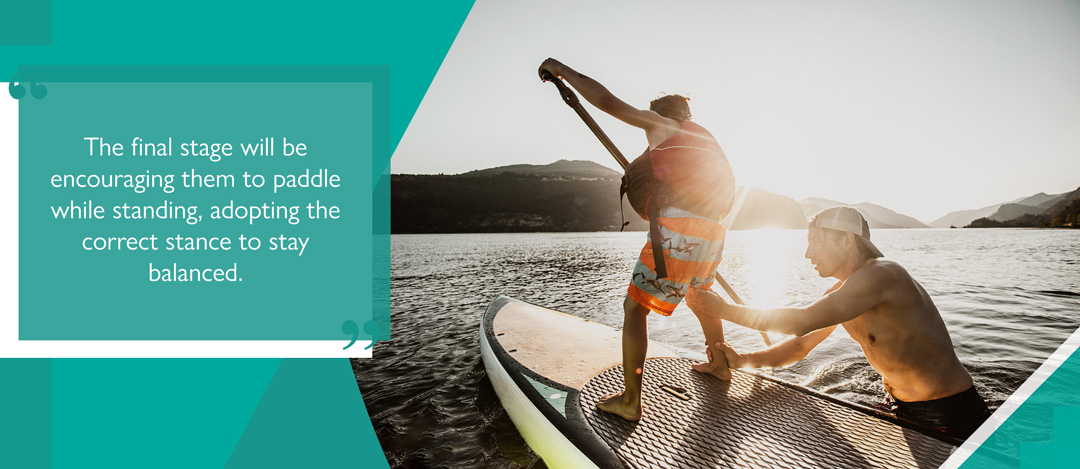
Bonding time on the water with an inflatable SUP
Sharing your interest in SUP with a child is an immensely rewarding and fun way of keeping them fit, healthy and active. As well as being fun, it could even be the start of a life-long love affair with the activity. Time spent together is certainly not time wasted, especially when everyone is enjoying themselves!
If you’re thinking about taking the step of investing in an inflatable SUP for your child, then Two Bare Feet can help. Our latest Entradia Allround 8’6” SUP has been designed with junior paddlers in mind. Light, rigid, and stable, it’s the perfect platform for getting small SUP enthusiasts to find their feet and refine core SUP technique.
For more information, feel free to get in touch with a member of our friendly and knowledgeable team of SUP enthusiasts.
